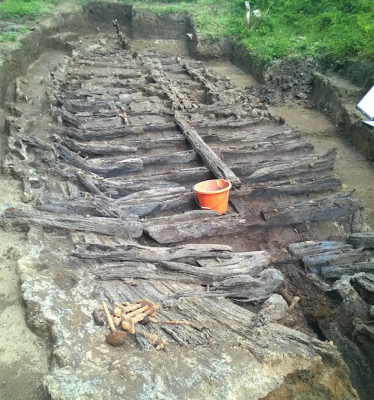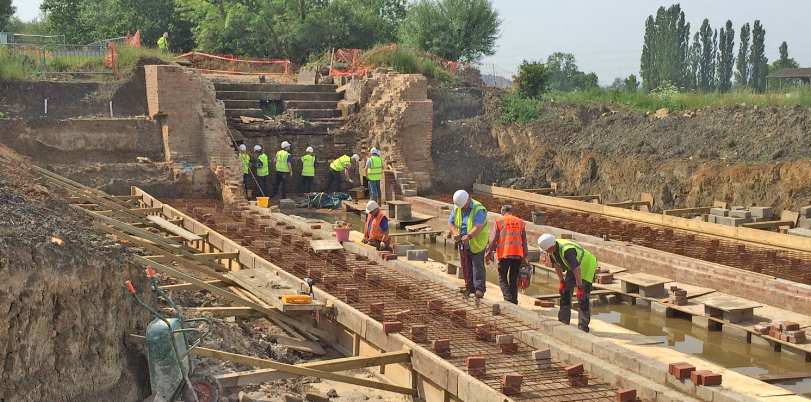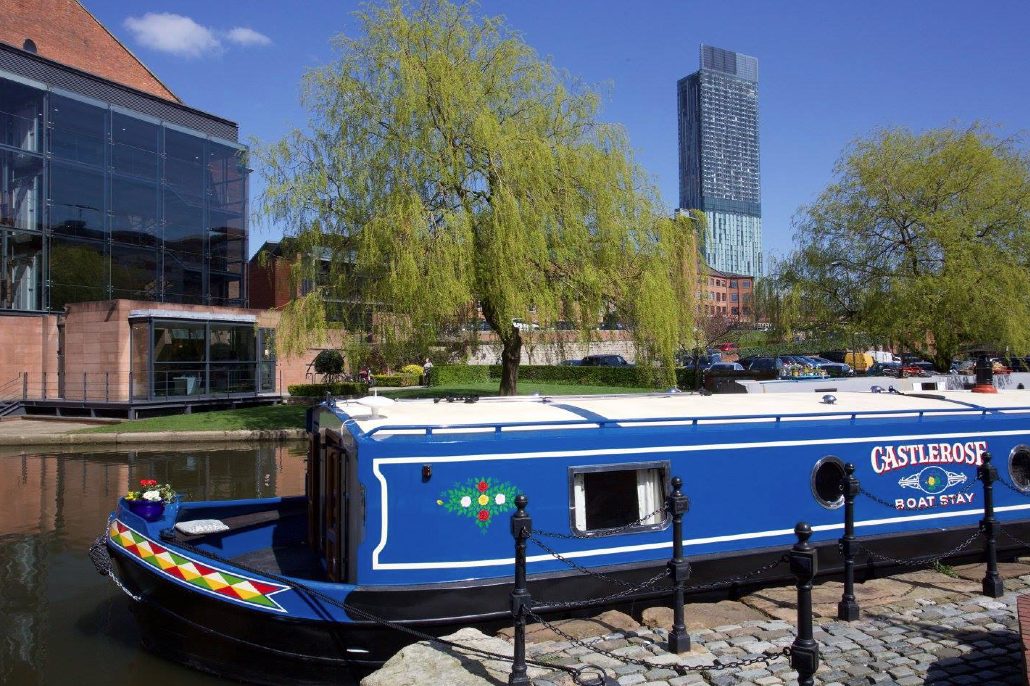200 year old canal barge discovered
Archaeologists have unearthed the remains of a Stover Canal barge near Newton Abbot in Devon. It is believed to be the only one of its kind found.
A team of volunteers have uncovered the remains of a 200-year-old canal barge at the Ventiford Basin in South Devon.
It is believed to be the only Stover Canal barge, so far, to have been archaeologically excavated and recorded.
According to the Stover Canal Trust, which promotes the preservation and restoration of the 18th century canal, the barge is early 19th century.
It used to transport clay along the canal network between Ventiford and Teignmouth.
“Its timber remains have been buried in the silt, probably since before the 1870s. In the past two years, the team has uncovered small sections of the vessel,” said the trust on its website.

The 19th century vessel is uncovered. Credit Dr Phil Newman
The work on the canal barge has been led by archaeologist Dr Phil Newman.
Speaking to the Torquay Herald Express, he said: “Three seasons of archaeological excavations on the Stover Canal at Ventiford Basin, have finally come to an exciting climax when the hulk of one of the canal’s barges was fully revealed.”
He continued: “The discovery, which are adjacent to the recently opened Stover Trail cycle route, has stirred massive interest among passing cyclists and walkers over the past two weeks, being easily accessible beside the path.”
The Stover Canal was built by James Templer of Stover Lodge between 1790 and 1792.
The first barge transported clay between Teignbridge and Teignmouth on 4 March 1790.
The canal was further extended North to Ventiford beyond Teigngrace.
The Stover Canal Trust is also working on uncovering an 80 metre long section of the Haytor Granite Tramroad.
This was used between 1820 and 1840 to transport granite from George Templer’s famous quarries at Haytor in the Dartmoor National Park, down to the canal at Ventiford.
Describing the tramroad as “a truly remarkable discovery”, the trust says it has “international heritage significance” and is a “unique monument to industry”.
This is because the track was built from elongated granite blocks placed end to end, with flanges along the rails to guide the wheels of the trucks.
Usually the more traditional iron rails with flanged wheels on the vehicles were used.
Although sections of the tramroad survive in situ within the Dartmoor National Park, until now it was believed that the track had been lost completely between Bovey Tracey and Ventiford.
“However, this amazing find, which was a siding off the main trunk, now provides the only significant surviving section of tramroad outside the national park,” said the trust.
Already this year, trust volunteers have found more sidings and rails than was originally known from previous excavations.
Restoring the historic Grantham Canal
Volunteers are now preparing to lay new foundations at lock 15 of the Grantham Canal in Lincolnshire as part of…
Hunt for child sex offender with links to UK canal system
The Metropolitan Police are hunting convicted child sex offender Michael Crabb who could be using the British canal network to…
Pictures: New canal hotel, Castlerose opens in Manchester
Castlerose Boat Stay is offering luxury apartment hotel accommodation in the heart of Manchester, as well as skippered cruises along…
Outer lock gates in West India Docks reinstalled
The outer lock gate, which mark the entrance to London's Docklands, has now been manoeuvred back into position after being…













